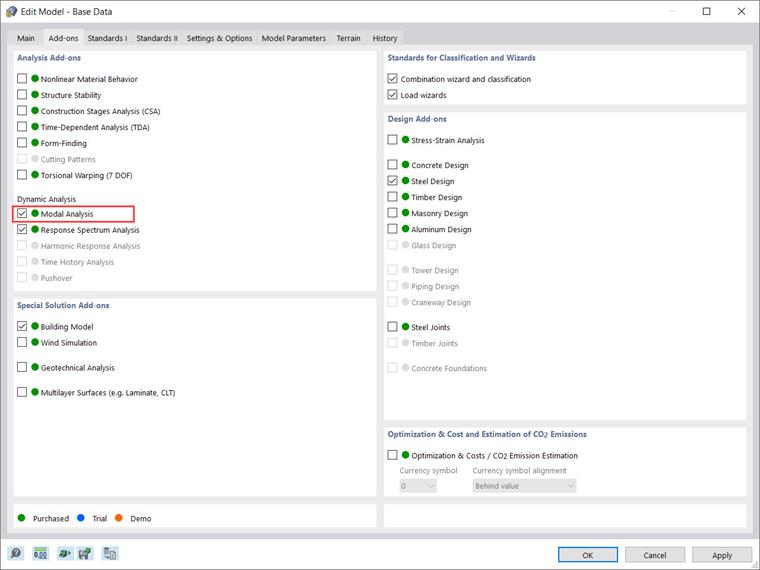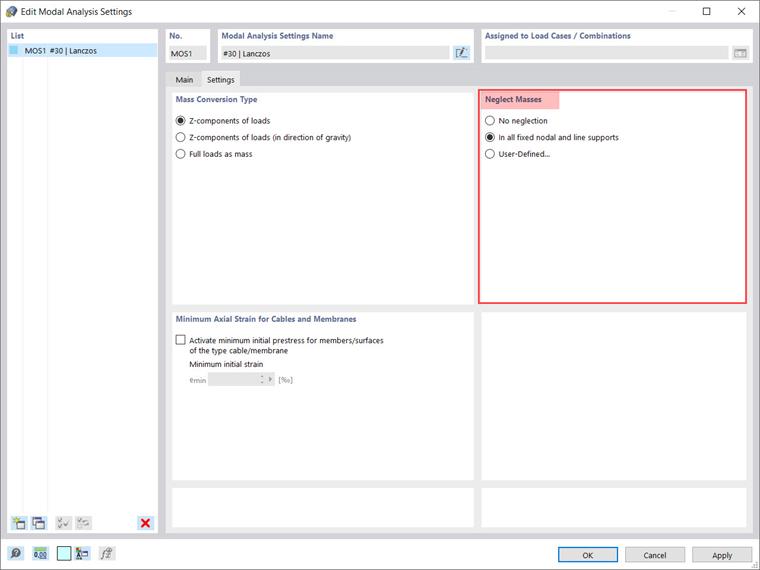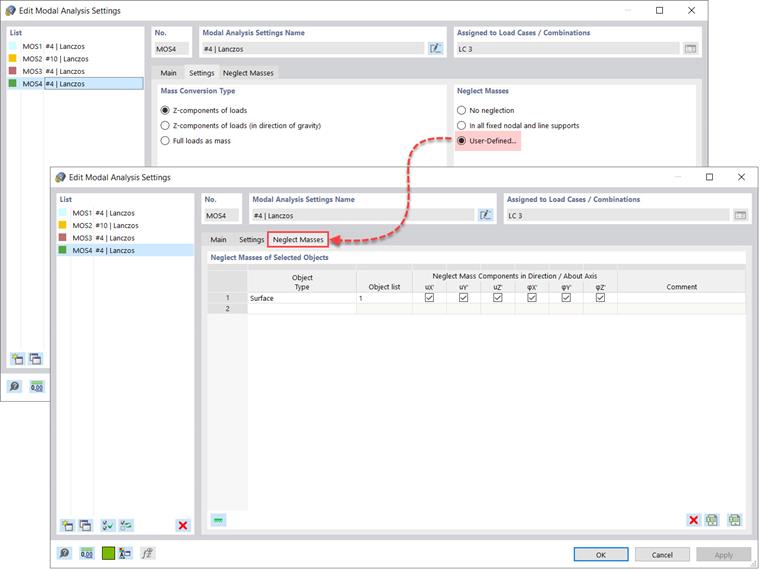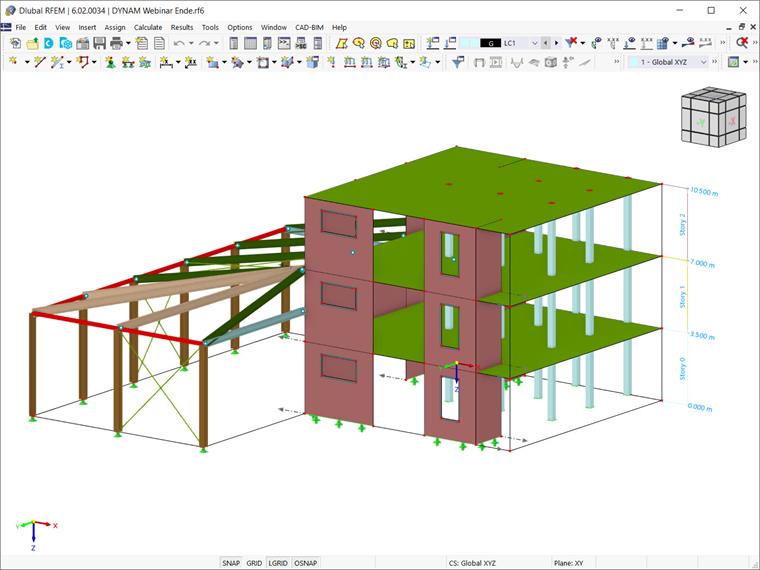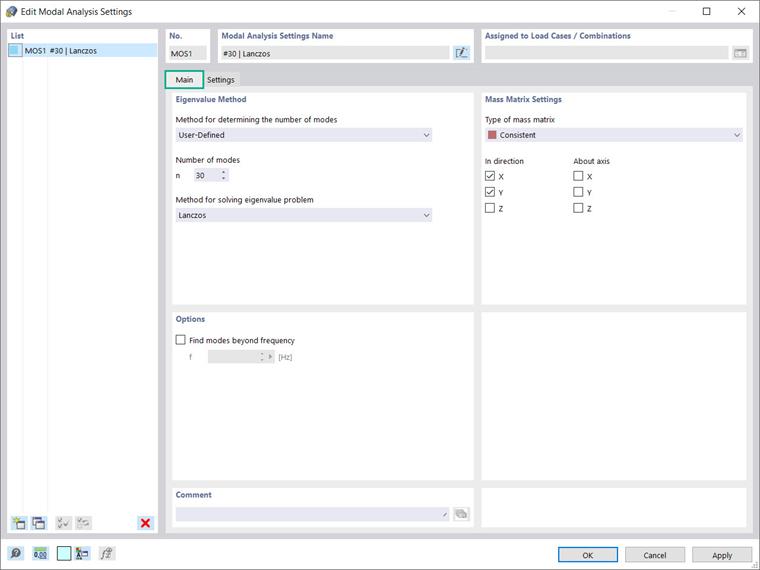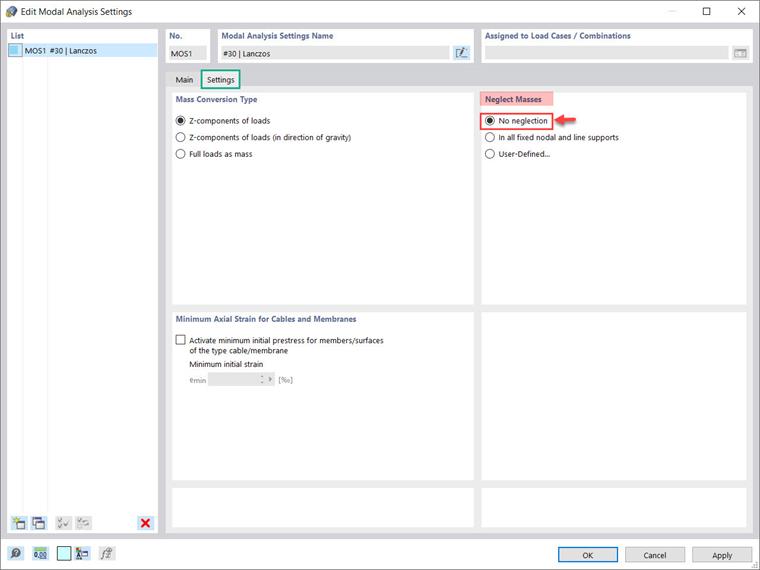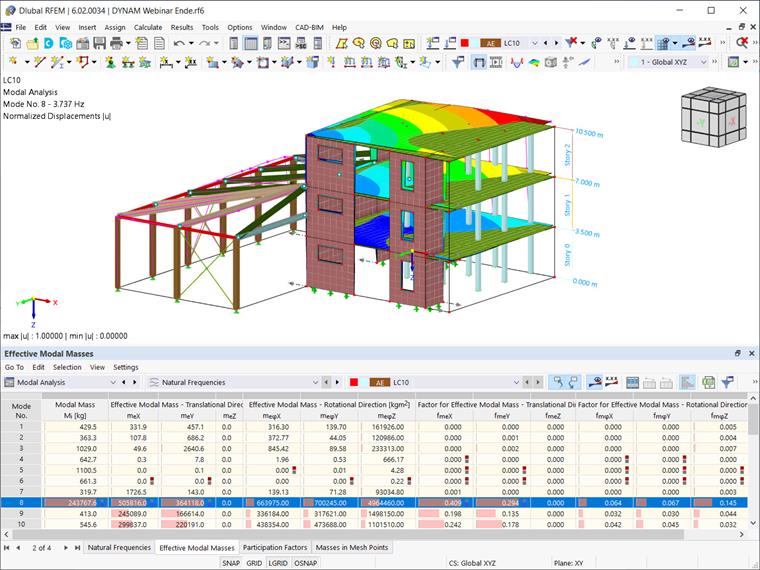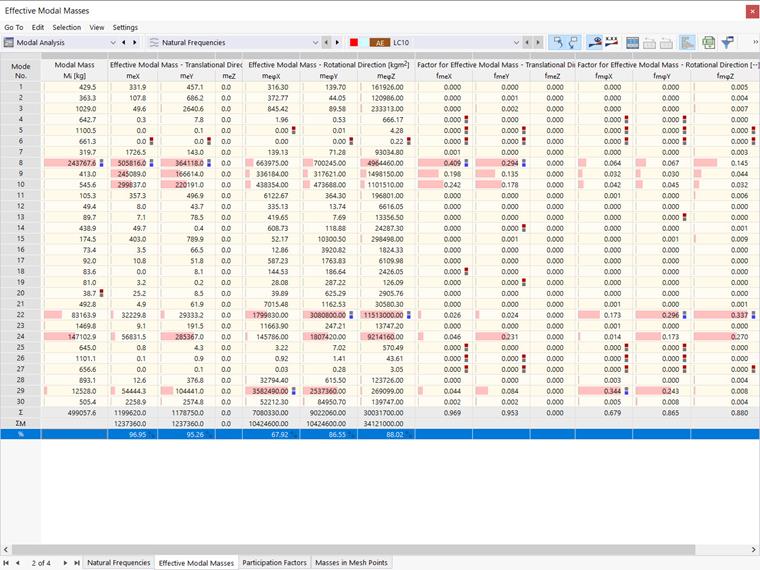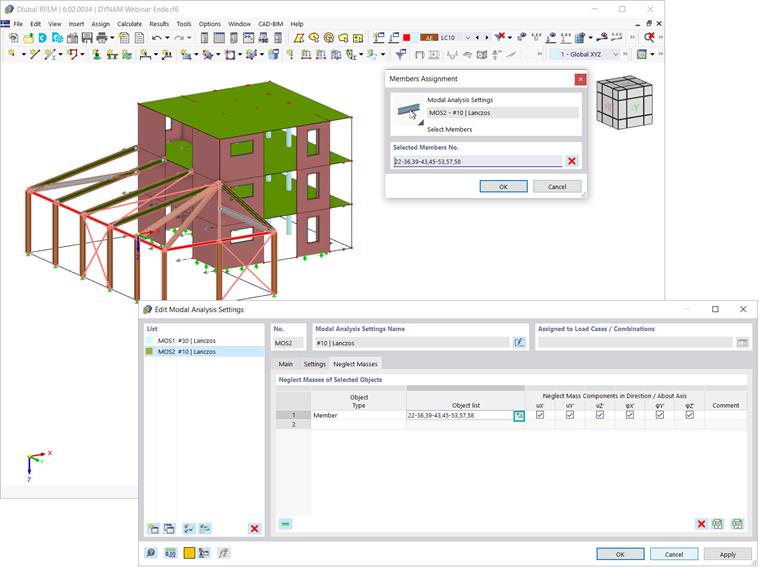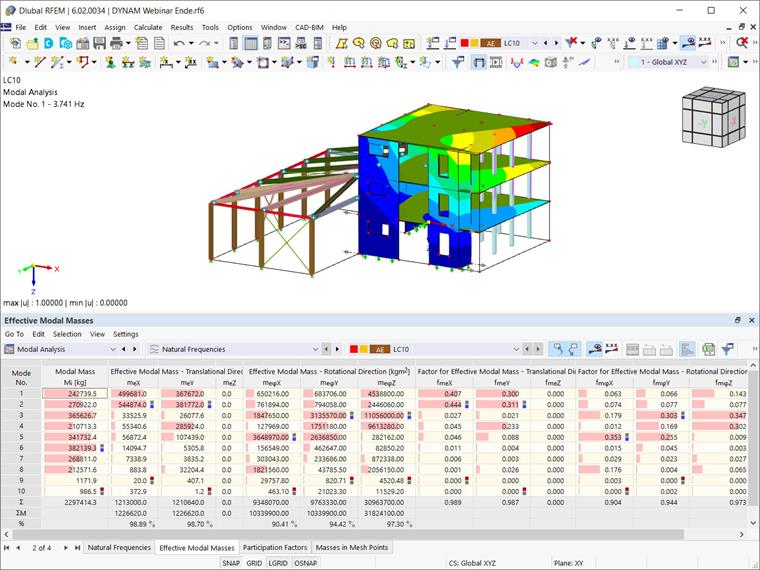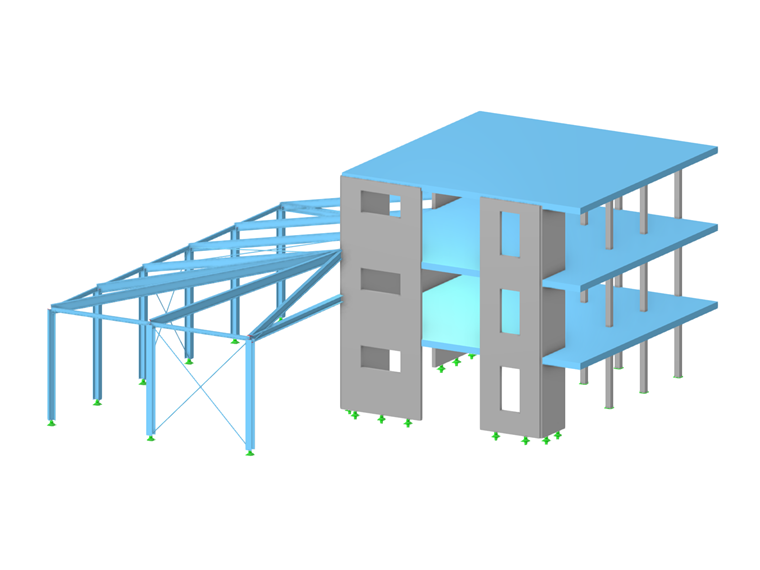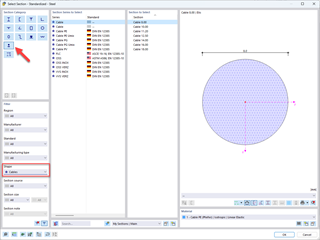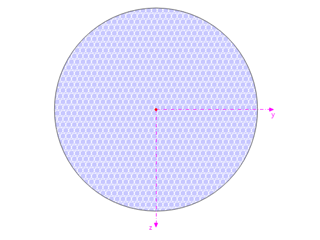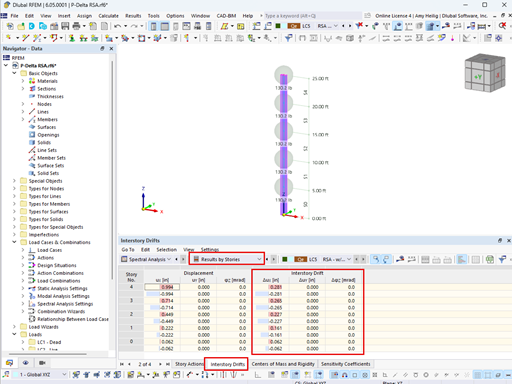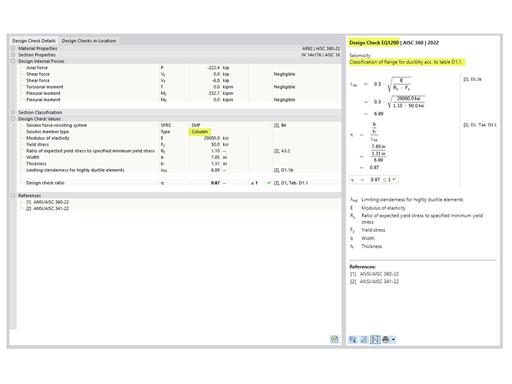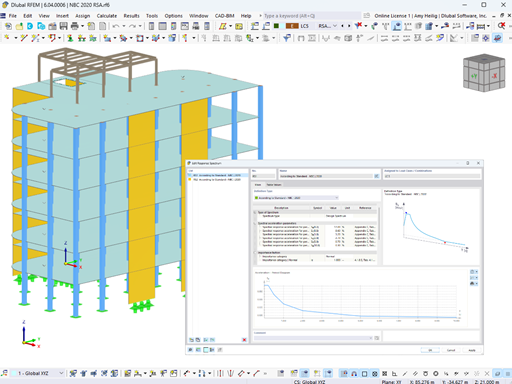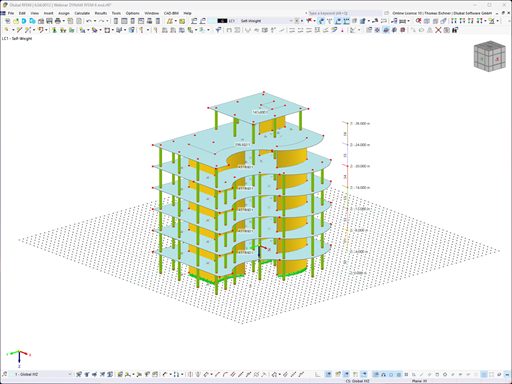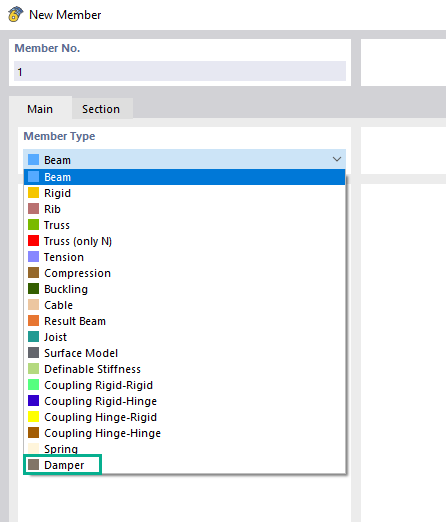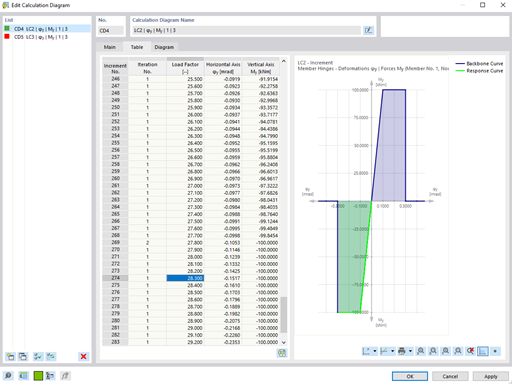In the modal analysis, however, it is often necessary to neglect masses. This is particularly true when the output of the modal analysis is to be used by the seismic analysis, where 90% of the effective modal mass in each direction is required for the calculation.
One typical example of this is the consideration of a supported surface that participates to a large extent in the structure of the total mass, but does not have a major influence on the dynamic response of the structure. When this kind of mass is considered, it can be difficult to reach effective modal mass factors of 90%.
Since these issues often arise, RFEM 6 allows you to neglect the mass of certain parts of the structure for the purpose of the modal analysis. The manner in which the masses are to be considered in the modal analysis can be defined in the modal analysis settings, as shown in Image 2. In contrast to the “No neglection” option (that is, no masses will be neglected), you can choose between two options to neglect masses: neglect the mass in all fixed nodal and line supports, or create a selection of the individual objects yourself.
The former option (Image 2), as the name suggests, allows you to set the masses in all fixed nodal and line supports to zero. This is done entirely by the program; no selection is required by you, because the program will automatically deactivate masses associated with the fixed nodal and line supports.
However, you can select the “User-Defined” option and manually select objects for which the masses should be neglected for the modal analysis. By selecting this option, a new tab (“Neglect Masses”) will be available to you to specify your object selection (Image 3). First, you are asked to specify the object type from the following: node, line, member, surface, and node without support.
Next, you can create the list of associated objects manually, or select them graphically using the “Select Individually” button in the object list field. For the selected objects, you are asked to define in which direction the masses are to be neglected. You can do this by selecting the check boxes for the directions of displacement uX, uY, and uZ, and rotations 𝜑X, 𝜑Y, and 𝜑Z accordingly.
In both cases (neglecting the mass in all fixed nodal and line supports or creating an individual selection of objects), the masses of the objects associated with the selected option will be deactivated and not considered in the modal analysis. By setting the masses to zero, the equivalent mass factor will increase so that 90% of the total mass required for the calculation in terms of the seismic analysis will be reached easily.
Please note that when neglecting masses, the stiffness of objects is not neglected. If you want to neglect both mass and stiffness, you should work with Structure Modifications, as will be explained in an upcoming Knowledge Base article.
Practical Example
The significance of the option to neglect masses in RFEM 6 will be demonstrated for the example in Image 4, showing a reinforced concrete structure with a steel extension.
First, modal analysis with the settings shown in Image 5 will be performed. Please note that the modal analysis settings specify the rules according to which the eigenvalues are calculated. In this case, the “User-Defined” option is chosen, and the number of modes to be calculated is set to 30.
The method for solving the eigenvalue problem is Lanczos as an iterative method to determine the p lowest eigenvalues and corresponding mode shapes of large models. The mass matrix is consistent, and the masses are set to act in the global displacement directions X and Y, assuming that a response spectrum analysis will be performed afterwards.
The “Settings” tab manages further settings required for the modal analysis, such as the mass conversion type, which controls the import of masses for the modal analysis. In this example, Z components are taken into account (Image 6). As discussed at the beginning of the article, the option to neglect masses is part of these settings. To demonstrate the importance of this option, the modal analysis will first be performed with no neglection considered.
The results of the modal analysis with these settings are shown in Image 7. Given that the output of the analysis is to be used by the seismic analysis, the results we are most interested in are the effective modal masses. For instance, the results suggest that the first seven eigenvalues are just local eigenvalues associated with the steel structure, in contrast to modes 8, 9, and 10, which comprise a high amount of masses and have a major influence on the dynamic response of the structure.
The results of all modes are shown in Image 8. It is noticeable that the calculation of thirty modes is necessary to reach the required 90% in both x and y directions (to be more specific, 96.95% is reached in the x direction, whereas 95.26% is reached in the y direction). Therefore, to reach 90%, you have to calculate more eigenvalues; however, the more eigenvalues that are to be calculated, the more time-consuming the calculation is, especially in the case of large structures.
At this point, the option to neglect masses can be used. This will allow you to calculate fewer eigenvalues; for example, 10 (that is, set the number of modes to be calculated to 10), and still reach 90% of the effective modal mass in each direction required for the seismic analysis. The masses to be neglected are those associated with the steel structure, as the results show that they do not have a major influence on the dynamic response of the structure.
To neglect the masses associated with the steel structure, you should define the object type as “Member” and create the list of objects manually or by selecting them graphically using the “Select Individually” button, as shown in Image 9. For the selected objects, you should select the check boxes for all the directions of displacement and rotation (that is, uX, uY, uZ, 𝜑X, 𝜑Y, and 𝜑Z accordingly) in order to neglect masses in these directions.
Finally, you can run the modal analysis with these settings and obtain the results as shown in Image 10. This time, the required 90% is reached with the calculation of only 10 modes, and the analysis time is significantly shorter.
